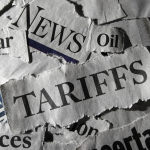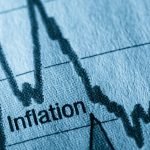While we might all scoff at the ‘fake news’ line, sometimes you really do need to sift through the headlines to find a fact.
This is not about politics, it is simply the media does not really like patting our politicians on the back for anything.
The other week we had some terrific economic news and I tuned into the ‘Today Show’ the following morning expecting to at least hear some mention of it. Not a word – I then asked a couple of couple of people over the weekend if they had caught the update and I had just missed it and it was all a bit of a surprise to them.
So just in case you missed, we have good economic news and the Australian economy is actually really surprising on the upside.
As you are probably aware, in 2017 over 400,000 jobs were created (approx. 300,000 full time positions and 100,000 part time according to the Australian Bureau of Statistics, ABS) in Australia. This trend has continued in 2018 and we now have 17 months of positive jobs growth. With just under 12.5 million working Australians, 400,000 new jobs is a really significant statistic. (Our population is approx. 24.7mil but that includes children, students, retirees etc)
This has flow on effects across the economy, and we are finally seeing some real budget repair.
In the 2017 May budget, Standard and Poors (S&P) were threatening to downgrade our credit rating. This is no small thing. Every Australian would be impacted as a downgrade increases the cost of funding and this increases cost in all parts of the supply chain. Think every business you use and the suppliers they use having to pay more to borrow funds. They have to pass that on to the consumer.
S&P didn’t down grade us but they were of the opinion that with a very unco-operative Senate, the government would struggle to get any cost savings measures through and the forecast annual deficit was likely to blow out – not that unusual over the last 8 years. Even with cost cutting measures, the Federal budget forecast was for a $29.4 billion deficit for 2017_18 financial year.
Roll forward to February 2018 and we have actually had four (4) months of net budget SURPLUSES (Acc. Surplus over 4 months $3.4b). The revised budget forecast @Dec 2017 (news only came out on Mar 28th) was for a $19.8b deficit and the February figures show it will be better than that – possibly by another $8billion before 30 June 2018.
This is where employment really helps. The government gets to pay less in welfare and actually picks up revenue from the employed.
Despite that painful Senate, Morrison has successfully pushed over $37 billion of budget repair initiatives through, so with increased receipts we could actually see a budget surplus by 19_20 FY -well in front of forecasts – take that S&P!
The improving economy lifts all boats and where we can see it most is in retail sales for both January and February – both surprised on the upside. Increased spending helps both big and small business and then adds to their ability to offer more jobs.
The next leg of this recovery is likely to be wages growth as competition for human resources starts to heat up. Any RFS staff reading this can ignore this comment…
Increased wages can lead to inflation and eventually interest rate rises but after many years of subdued wages growth, increases will a welcome injection to the economy.
Finally, if you are living anywhere near the Gold Coast, we now have the largest sporting event in Australia over the last 8 years happening right here on your doorstop so what isn’t there to be excited about.
The May 2018 budget is scheduled for May 8th and all this good news should mean we will finally see some room for the government to focus on quality expenditure verses trying to take even more money away from us. That is good news for everyone.
















